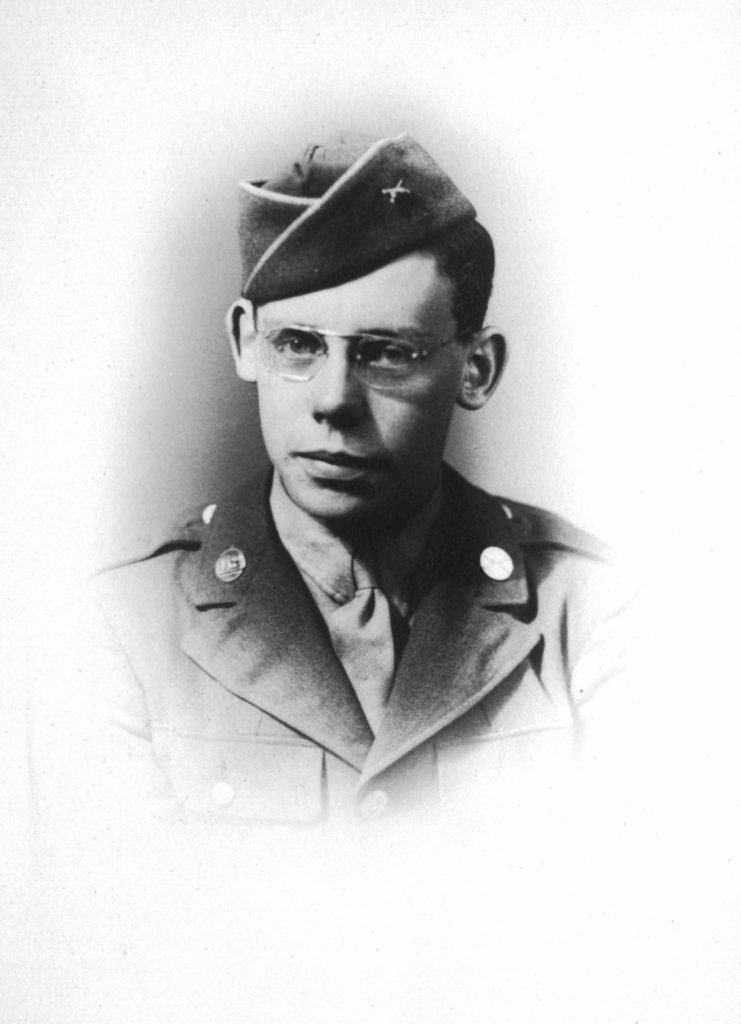
My dad, Armand Gabriel Charest, was a US Army veteran of World War II. I knew this growing up as he would talk a lot about his Army adventures. We even attended a reunion of his 41st Division in 1971. He always expressed pride in being a soldier and pride in his role during WWII. But there were things about his army service I didn’t know until he wrote his memoirs in 2002.
Then there were some things about his Army service I didn’t know until after he passed, which left questions for which I’ll probably never have answers.
The Background

Dad’s Army training was supercharged by being selected as a company machine gunner, meaning he got to carry the rather heavy machine gun in addition to his regular kit. Being a machine gunner also meant he was at the front of actions later in his Army tour of duty, when his company faced Japanese Banzai charges on Pacific Islands. He ended his Army career as part of the US occupation forces in Japan after they surrendered, and his Division was assigned to pacify the cities of Kure and Hiroshima.
Although Dad would talk about being in Hiroshima, he never spoke about what he saw there. He owned a copy of John Hershey’s book “Hiroshima,” which I read as a young teen. As a member of the baby-boomer generation, I grew up under the threat of nuclear annihilation which tended to peak my curiosity about Hiroshima (and Nagasaki) all the more. During my teen years, I tried many times to engage Dad in what he saw in Hiroshima, but the most I ever got out of him was once telling me that as he rode into the city, buildings on the outskirts were leaning away from the blast area. As they got closer, buildings were leaning more, and then closer still they were all knocked down.
Dad retired from his career in tool and die making in 1984, went back to school and earned a BA in English literature. He spent his remaining years tutoring English as a Second Language (ESL) students and writing. He had dreams of becoming a published fiction writer, but the closest he ever came was selling his two-part story of visiting Albania to a travel magazine. The magazine did publish part-one but went belly up before they published part two.
Dad starting writing his memoirs about 1999 and asked me to edit them. Given the way Dad had critiqued my writings back in my school days, I approached my duties as his editor with great enthusiasm. The first draft of his memoirs was pretty sparse, and I remember kicking them back to him with a comment to the effect “You’re over 70 years old. You grew up in the Great Depression, survived WWII, raised four children, and this is all you can say?” Dad grumbled some, but the next draft greatly expanded his life’s story.
Dad’s second draft did include a brief description of interactions with the Japanese civilians during the occupation winter of 1945-1946. But he still didn’t include anything about his time in Hiroshima. This lack of narrative was in direct contrast to his detailed description of the battle of Biak Island and his time spent in the Philippines.
This time, my editing was a bit more gentle, but I had a long talk with Dad about including details of his time in Hiroshima. I pointed out that he had a unique perspective on nuclear war, one that the current generation of war theorists and strategists lacked. I explained how people needed to read a first-hand account of what a nuclear blast really did to a city and it’s people. Finally, Dad agreed with me and promised to write more.
His next and final draft added two short paragraphs, a total of nine sentences, about being in Hiroshima.
One of the things I also knew about dad’s Army service was that he had brought home a “war trophy,” a Japanese army-issue rifle (minus the firing pin). Over the years he would periodically display it in the house for a while, then put it away, but he never explained how he acquired it. When we moved from Long Island, New York, to a rural Hudson Valley, New York town in the summer of 1972, his rifle came with us. He left it behind when he and Mom divorced in March 1974, and my younger brother Howard took custody of it. Howard proudly displayed it in his bedroom until he left for college. Mom kept this rifle for several more years until Dad reclaimed it and gave it to a friend who collected antique firearms, much to our (Howard and mine) dismay. Dad never spoke of it again.
After my parent’s divorce, Dad remarried and moved to Los Angeles, California with his new family. He divorced again and – briefly – remarried and divorced a third time. After his third try, he remained single and moved to a senior citizen center in 1992. It was from this place Dad tutored and wrote his stories. Dad suffered a stroke in August of 2002 which left him partially paralyzed. He passed on the evening of February 3, 2004, at the age of 79, and was buried with full military honors in Riverside National Cemetery, California, as befitting his veteran status. Dad had made me the executor of his estate and so I inherited a large collection of his unpublished stories.
When he passed, I thought Dad’s stories passed with him. But there was one more still to come.